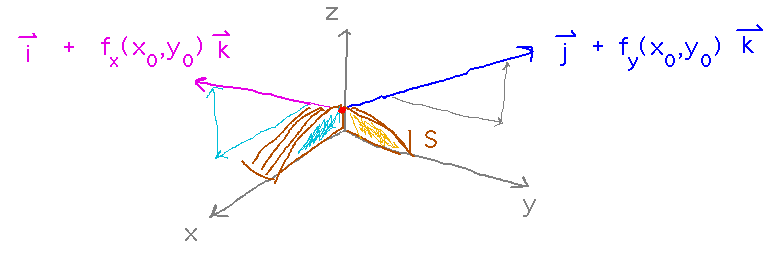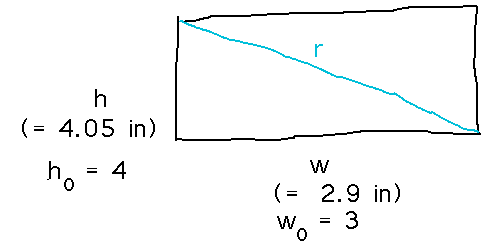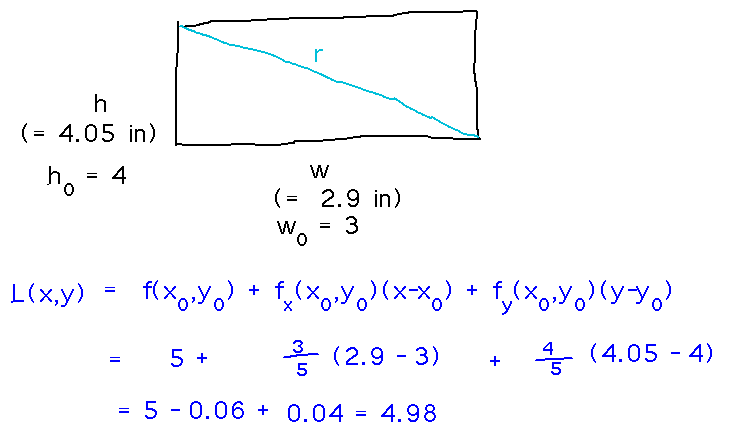Misc
Problem Set 5
Beware of subtle (but correct) wording on question 3 - it’s not asking for the tangent to the curve.
GROW STEM Events
Title IX Workshop
Today, 4:00 - 5:00 PM, Newton 204
By Tamara Kenney, Geneseo Title IX coordinator
Club Interest Meeting
Tomorrow (Thursday, March 8), 5:00 PM, Newton 204
Part of creating a student organization focused on diversity in STEM fields.
Questions?
Tangents
Where do the equations for tangent lines and vectors come from in the book’s derivation of the equation for a tangent plane (bottom of page 388)?
The “traces” are cross-sections through the surface, parallel to the x or y axis. Along each trace, x or y is constant, while the other variable can change. Thus the slope of the trace at any point is the change in z with y (or x) while the other stays constant, i.e., exactly what the partial derivatives are. The directions of these tangent lines are then vectors that change by fx(x0,y0) or fy(x0,y0) units in the z direction per unit change in the x or y directions, i.e., vectors with a unit i or j component, none of the other, and a k component dependent on the derivatives.

Linear Approximation and Differentials
Consider a rectangle of height h and width w.
Use a linear approximation to estimate the length of the diagonal when h = 4.05 and w = 2.9 (hint: the length of the diagonal when h = 4 and w = 3 is easy to find).

Find the equation for a linear estimate:

To use this, we need to know function f and its derivatives. Renaming a little, call the function r(w,h), since it finds the length r of the diagonal in terms of width and height:

Now we can find and simplify the derivatives:

And finally, plug in the known values for x0, y0, x, and y:

Key Points
Partial derivatives are slopes with only 1 variable changing.
Linear approximations via planes.
Next
The chain rule for partial derivatives.
Read section 4.5.